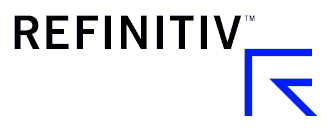Artificial intelligence (AI) and machine learning technologies have the potential to fundamentally improve trader performance. However, in order to be successful, trading desks must adopt a flexible and data-driven approach, according to a recent webinar hosted by Refintiv.
Speakers on the Smarter Traders with Smarter Machines webinar said that although the use of AI-led systems, such as algo wheels, automation and analytics solutions, have been in use for some time, the buy-side trading desk is primed to develop these tools even further.
“Simple trade automation, the idea of creating rules to take some of the more liquid or easier to trade orders off the books makes sense,” said Ian Mawdsley, head of buy-side trading EMEA & APAC at Refinitiv.
“One of the more interesting ways to look at that would be if there was some way of setting certain parameters around tracking stocks or volatility, to be able to look into the myriad of different trading applications and bring them all together to form a story.”
The use of AI on trading desks should ultimately be geared towards providing as much relevant and condensed information as possible to the trader, said Ashwin Venkatraman, global head of equity trading automation and execution at JP Morgan Asset Management, and the best way to do so is to adopt a data-driven approach as early as possible.
“There’s a vast amount of data that a trader is having to take in, to try to decide what to do with a for a given order, so it’s about trying to condense that as much as possible,” commented Venkatraman.
“It’s about aiding the trader with condensed information which the model can do behind the scenes to assist with that decision-making. If you look at the medical world, people don’t necessarily talk about automation, but they do talk about AI and models that are there to assist the clinician. It’s not different to trading.”
Webinar audience listeners were also given their chance to provide their opinions on the use of AI on trading desks. A poll of listeners to gauge the current use of AI as part of the trading process founds that around 27% were currently using the technology to optimise trading, while just over-half of respondents indicated that they were still considering future implementation.
Optimising trader performance was highlighted as the area where AI technologies possess the most value to the trading desk, according to half of webinar listeners, while streamlining trader workflows (20%) and improving alpha generation (16%) were also noted as key factors.
Michael Broadbent, principal consultant at Ergo Consulting, added that while AI can present trading desks with a significant amount of potential, firms should be aware of their current technology capabilities and how that will form the basis of their future front-office technology stack.
“You are embedding your future with present technologies, so whatever your present technology solution is, it has to have a certain amount of future embedded in it,” Broadbent said. “The point is to have a rolling view of what might come up in the industry in the future and to start investigating how you might be able to take advantage of that while you use your current set up.
“This is happening now. It is time for the buy-side desks to take control of their own trading and their own technology.”
